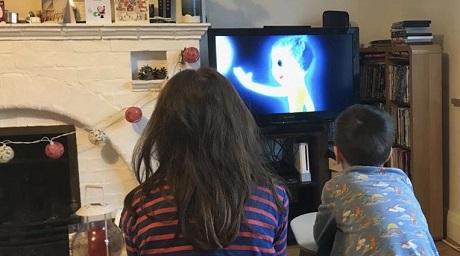
Published on: 27/12/21
Inside Out, the Disney Pixar film about a child’s memories, plays a role in helping children and their families understand more about how the brain works.

Published on: 27/12/21
First published: 27/12/19
The film follows a young girl, Riley, from birth up to the age of 12 and focuses on a big moment in her life – moving house and school – and the emotional challenges of those two life changing moments that are out of her control.
Throughout, the film shows that a range of emotions is needed to help children learn and build their brain pathways. One of the film’s main messages is that all emotions have a place, even negative ones like sadness.
Acknowledging emotions is healthier than ignoring them and can lead to better decision-making. At one point in the film the character Joy tries to shield Riley from Sadness but it’s only once Riley has felt sad that she has the clarity to make a good choice.
Michael Shadlen, MD, PhD, one of the principal investigators at Columbia’s Mortimer B. Zuckerman Mind Brain Behavior Institute and a consultant on the film, said: “[It’s] interesting to see, or accept, that some things as a father that I might regard as being joyous might have actually been coloured as angry or sad. To embrace the idea that a little bit of sadness can actually save the day sometimes as opposed to wanting to supress all that sadness and make everything seem great.”
Writer-director of Inside Out Pete Docter said the inspiration for the film came from trying to understand his daughter’s mood changes five years ago, when she was 11. Docter consulted with psychologists and learnt all he could about brain science.
Five main emotion characters (Joy, Sadness, Disgust, Fear and Anger) feature in the film and the viewer sees how they react to Riley’s experiences of the outside world. Riley’s emotion characters control her feelings by using a control board inside her brain. There are also moments where you see inside her parents’ brains and how their emotion characters react differently to the same situations.
In a review of the film, The Washington Post wrote: “For a pre-teen in turmoil, the emotions really are in control, say pediatric neurologists, primarily because their brains are not yet fully connected. The white matter that links regions of activity in the human brain isn't completely laid down until a person's late 20s, and the last region to be fully wired is the most important, the prefrontal cortex. This is the seat of executive functioning where we deliberate, plan, reflect and understand, and it's not even close to being fully wired in an 11-year-old.”
Daphna Shohamy, PhD, also a principal investigator at Columbia’s Mortimer B. Zuckerman Mind Brain Behavior Institute and a consultant on the film commented: “[The film is] accessible and interesting. It was a very useful platform for me both as a parent, and as a neuroscientist, to have conversations with [my children] about how these things come together and what it means for day-to-day decisions.”
In a review of Inside Out Forbes.com said: “Pixar's movie is also a triumph for science education. Inside Out has managed to teach a generation of kids – and adults – how memory works.”
You can see Inside Out on Wednesday 29th December, on BBC One at 1.40pm.
Learn more about memory after an ABI and how different parts of the brain function.